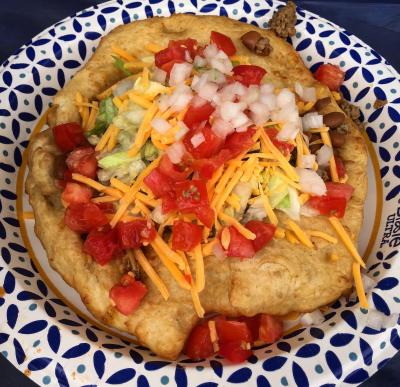Long before Denver was founded in 1858, the confluence of Cherry Creek and the South Platte River was a gathering place for many Native American tribes, such as the Ute, Arapaho, Cheyenne, Sioux, Blackfoot and Crow.
And it still is. Some of the largest American Indian markets in the nation take place in the Denver metro area, offering a fantastic opportunity to experience Native American culture, dance, art and food.
Colorado Indian Market & Southwest Art Fest
WHEN: Second weekend in January
WHERE: Colorado Springs Event Center
This colorful festival attracts more than 100 of the nation’s best Native American artists, displaying a wide array of paintings, wall art, jewelry, fashion, home décor, sculptures, handbags and collectible knives. There are artist demonstrations, Native American singers, dance groups, poets and flute players. Note: Since the Denver Mart permanently closed its doors, the event has moved to Colorado Springs. The format will remain the same.
Denver March Powwow
WHEN: Third weekend in March
WHERE: Denver Coliseum
One of America’s largest Native American gatherings attracts 1,600 dancers from 100 tribes for a weekend of song, dance, tradition and history. And shopping. More than 170 booths offer authentic Native American crafts, blankets, pottery, beadwork, jewelry, arrows, tomahawks and food, all while 50 drummers set the beat and hundreds of dancers move in a swirl of color and motion. A highlight is the modern powwow dancing competition. While a drum group keeps the beat and sings traditional songs, hundreds of dancers can be on the floor at any one time, creating a spectacle of amazing beauty and history.
Indian dancing is a highly individualized activity, pursued in a group. Each dancer moves independently to the beat of the drum. Dance styles are derived from traditional dances of various tribes but are not specific to any tribe and a great degree of individual creativity is allowed.
Dance regalia varies depending on the style of dance. Traditional dancing was originally a form of storytelling, where warriors acted out deeds committed during a battle or hunt. Male dancers wear headdresses, referred to as "roaches." The roaches are made with porcupine and deer hair woven together with eagle feathers worn on top. Bone breastplates, eagle feather bustles, beaded armbands, chokers made of animal bones and anklets of angora fur with large bells are some of the finishing touches.
The jingle dress dance is another popular competition, although actual ceremonial jingle dances are not performed in public. In this woman’s dance, the dress is covered with dozens of silver bell-like “jingles” that make a distinctive and pleasing sound, especially when the dance floor is covered with women wearing this melodic dress.
The most fun event to watch is the intertribal dance. During these dances, men and women of all age groups, dancing all styles, join together on the floor to the beat of all the drums in attendance.

Indian Market & Powwow
SPANISH COLONIAL MARKET AND INDIAN MARKET & POWWOW
WHEN: September (Spanish Colonial Market) and June (Indian Market & Ceremonial Dance)
WHERE: Tesoro Cultural Center
The Tesoro Foundation (meaning “treasure” in Spanish) stages two colorful events: the 1840s Rendezvous & Spanish Colonial Market in September and an annual Indian Market & Ceremonial Dance in June. Both events feature nationally known artists, musicians and dancers, displaying their wares on the sprawling grounds of The Fort restaurant. The Fort is an authentic reproduction of the 1830s trading post, Bent’s Old Fort, which was located on the Santa Fe Trail in La Junta, Colorado, on what was then the border with Mexico.
Made from genuine adobe bricks, The Fort specializes in foods of the Old West, including locally sourced buffalo, elk, quail and even rattlesnake, mixed with tantalizing theme cocktails like a prickly pear margarita and a hailstorm (bourbon and mint with “hail-like” ice in a canning jar).
The Indian Market has one of Colorado’s most competitive powwows that attracts top dancers from across the West for a series of dance events that includes heritage competitions of traditional, shawl, fancy, grass and jingle dancing.
A visit to The Fort is magical at any time, but during the Spanish Colonial Market, the adobe fort is filled with mountain men re-enactors, cannon firing demonstrations, tomahawk throwing contests, fiddle music and Native Americans, as well as famed artists of the Southwest, author signings, and master craftspeople working on jewelry and sculptures.
Photos by Rich Grant.




